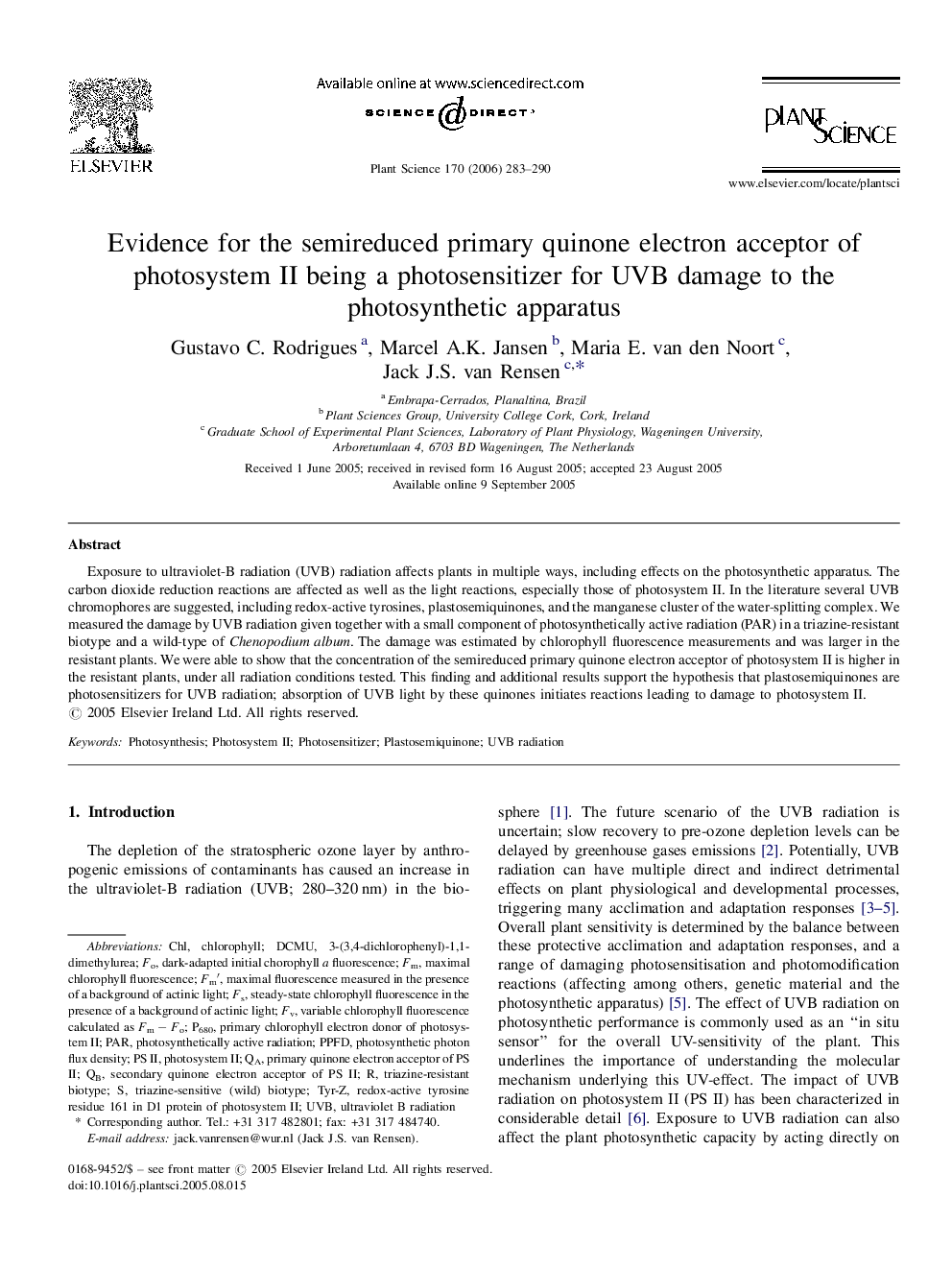| Article ID | Journal | Published Year | Pages | File Type |
|---|---|---|---|---|
| 2018626 | Plant Science | 2006 | 8 Pages |
Exposure to ultraviolet-B radiation (UVB) radiation affects plants in multiple ways, including effects on the photosynthetic apparatus. The carbon dioxide reduction reactions are affected as well as the light reactions, especially those of photosystem II. In the literature several UVB chromophores are suggested, including redox-active tyrosines, plastosemiquinones, and the manganese cluster of the water-splitting complex. We measured the damage by UVB radiation given together with a small component of photosynthetically active radiation (PAR) in a triazine-resistant biotype and a wild-type of Chenopodium album. The damage was estimated by chlorophyll fluorescence measurements and was larger in the resistant plants. We were able to show that the concentration of the semireduced primary quinone electron acceptor of photosystem II is higher in the resistant plants, under all radiation conditions tested. This finding and additional results support the hypothesis that plastosemiquinones are photosensitizers for UVB radiation; absorption of UVB light by these quinones initiates reactions leading to damage to photosystem II.
